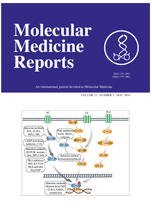 After questions from a reader, researchers took a second look at their data about the effects of a vitamin A metabolite on tumor cells, and realized their key finding was inaccurate.
After questions from a reader, researchers took a second look at their data about the effects of a vitamin A metabolite on tumor cells, and realized their key finding was inaccurate.
They’re now retracting the paper, from Molecular Medicine Reports, because it originally reported that higher concentrations of retinoic acid (RA) were more effective in curbing the proliferation of brain tumor cells. But it seems that the RA dose made less of a difference than they originally believed, according to the retraction notice:
We wish to retract our research article entitled “Retinoic acid-incorporated glycol chitosan nanoparticles inhibit Ezh2 expression in U118 and U138 human glioma cells” published in Molecular Medicine Reports 12: 6642-6648, 2015. An interested reader noted some anomalies in the presentation of Fig. 4 in our paper, calling into question the validity of the reported data. In examining our original article, we acknowledge that the data for RA (25 µm) did not show a higher density of cells compared with RA (10 µm), as shown in Fig. 4, and therefore Fig. 4 conveyed inaccurate information for the readers. Owing to the importance of these results, which bear significantly upon the conclusions that one may draw from this work, we have decided to withdraw our paper from Molecular Medicine Reports.
The paper was published online last September, and retracted in April — so, not surprisingly, has not been cited, according to Thomson Reuters Web of Science.
The notice is a bit puzzling, since if a higher concentration is more effective, the researchers should have seen fewer cells, not a higher density. Here’s an excerpt from the abstract:
Exposure of the U118 and U138 human glioma cells to the RA‑incorporated GC nanoparticles for 24 h resulted in a concentration‑dependent inhibition of cell proliferation. Among the range of experimental RA concentrations, the minimum effective treatment concentration was 10 µM, with a half maximal inhibitory concentration of 25 µM.
According to last author Ji-Xin Shi, affiliated with Nanjing University in China, the main problem lay with panels B and C of figure 4:

Shi told us that the authors didn’t properly check the final proof of the paper:
This is why [the error] was not noticed it prior to publication.
Later, one reader pointed out that there are some problem with the
This slideshow could not be started. Try refreshing the page or viewing it in another browser.
4 thoughts on “Does dose matter? Tumor killer paper thought so, now must retract”
Leave a Reply
For me, it looks like, the figures 4B and 4C represent the identical view of cells, perhaps at different time points, but NOT different cell culture dishes with different concentrations of RA.
I am not surprised that this article was retracted. If you take a closer look at fig 4, you see that fig 4b is a nice collage of fig 4a and 4c. Nice piece of manipulation, and I hope someone will go through the other articles published by this group.
Yes, Morty is right: I now see that the right half of figure 4a and the left part of 4c together make 4b. Would be interesting to get an explanation, if and how this could happen accidentally.
Yes very easy to spot after you mentioned! Otherwise I fail to understand the reason for retration, as higher concentration (of RA) gives higher percentage of Apop cells, whats was wrong in this?